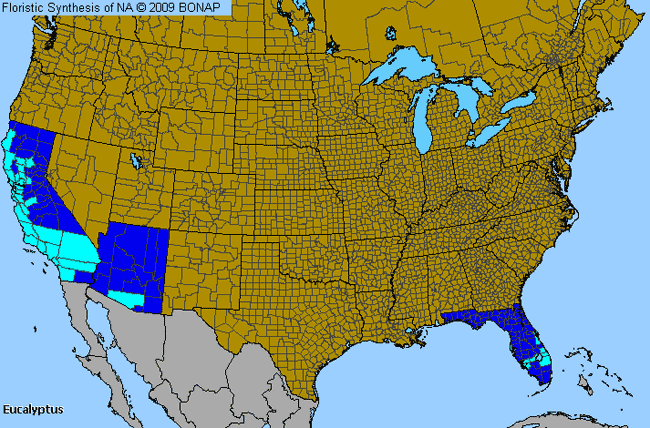Gum; Eucalyptus (Eucalyptus)

Gum; Eucalyptus Genus Details

Eucalyptus or myrtles are a large group of evergreen trees and shrubs native to Australia that grow in tropical areas of the U.S. They can reach over 100 feet in height. Eucalyptus leaves are alternate and simple. Many species are planted as ornamentals or windbreaks. Branches and leaves are often dried and used as a decoration indoors, giving off a pleasant and distinct fragrance. Flowers are primarily insect-pollinated with some wind-pollination. An odor response can occur due to the intense fragrance of fresh or dried leaves and flowers.
Gum; Eucalyptus Allergy Info

Little pollen is found in the atmosphere and exposure is limited. Most species of Eucalyptus have been reported to be allergenic, although severity has not been great.
Gum; Eucalyptus Pollen Description

Grains are suboblate, the amb triangular and usually with concave sides. Eucalyptus grains are 3-4 colporate and the colpi are long, narrow and fused.
Pollen grains are usually 20-24 micrometers.
Species in This Genus

Allergenicity Legend:
 Mild Allergen |
Mild Allergen |
 Moderate Allergen |
Moderate Allergen |
 Severe Allergen |
Severe Allergen |
 Allergy Test Available
Allergy Test Available
Gum; Eucalyptus (Eucalyptus) is a genus of the MYRTACEAE family.
This genus includes the following allergenic species:
This genus includes the following allergenic species:













